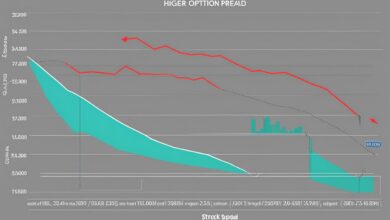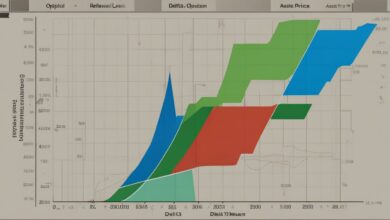Sell in May and Go Away: Criticisms Addressed

Key Highlights
- “Sell in May and Go Away” is a well-known investment strategy that suggests selling equity portfolios in May and buying back stocks after Halloween
- The strategy originated from old England when stockbrokers would go on summer vacation and not return until September
- Sell in May and Go Away has gained credibility among investors due to notable stock market declines during the May-October period
- The performance of the strategy has been inconsistent, with historical data showing mixed results
- Critics argue that the strategy is based on flawed assumptions and may not be suitable for all investors
Introduction
In the world of finance, there are countless investment strategies and adages that investors follow to navigate the stock market. One such strategy that attracts attention every year is “Sell in May and Go Away.” This popular saying suggests that investors should sell their equity portfolios in May and not return until after Halloween. While the strategy may seem unconventional, it has gained credibility among investors due to historical patterns and market trends.
The concept of “Sell in May and Go Away” dates back to old England, where stockbrokers would take summer vacations from the market. The original saying was, “Sell in May and go away, do not return until St. Leger’s Day.” Stockbrokers would wait until the end of the horse racing season, which concluded on St. Leger’s Day, before returning to work. Over the years, this saying has evolved into a seasonal investment strategy.
The strategy attracts attention because of the historical stock market declines that have occurred during the May-October period. Infamous black swan events such as Black Monday in 1987, the post-Lehman Brothers crash of 2008, and the correction in August 2011 have all taken place during this time. These historical events have led investors to question the validity and effectiveness of the “Sell in May and Go Away” strategy.
Understanding “Sell in May and Go Away”
The “Sell in May and Go Away” strategy, also known as the “Halloween indicator,” is based on the idea that the stock market tends to underperform during the summer months. It suggests that investors should sell their stocks in May and hold cash until after Halloween, when they can buy back into the market. The strategy is rooted in the belief that the summer months are characterized by low trading volumes and market volatility, making it an opportune time to exit the market.
Definition and Origin of the Strategy
The “Sell in May and Go Away” strategy is a seasonal investment approach that advises investors to sell their equity portfolios in May and re-enter the market after Halloween. The origins of this strategy can be traced back to old England, where stockbrokers would take extended summer vacations, starting in May and returning in September.
The original saying was “Sell in May and go away, do not return until St. Leger’s Day.” Stockbrokers would wait until the St. Leger’s Day horse race, which marked the end of the racing season, before returning to work. Over time, this saying has evolved into a popular investment strategy.
The strategy is based on the belief that the stock market tends to experience underperformance during the summer months, with lower trading volumes and higher volatility. By selling stocks in May and staying out of the market until after Halloween, investors aim to avoid potential losses and take advantage of stronger market conditions in the remaining months of the year.
Why It Attracts Attention Among Investors
The “Sell in May and Go Away” strategy attracts attention among investors for several reasons. Firstly, it aligns with the seasonal patterns observed in the stock market, where the May-October period has historically shown lower average returns compared to other months. This aligns with the idea that the summer months tend to be characterized by lower trading volumes and higher market volatility.
Secondly, the strategy appeals to investors who have specific investment objectives or financial situations that may benefit from a more conservative approach during certain periods of the year. For example, investors nearing retirement or those with a shorter time horizon may prefer to reduce their risk exposure during the potentially volatile summer months.
Lastly, the strategy has gained attention due to the number of infamous stock market declines that have occurred during the May-October period. Events such as Black Monday in 1987, the post-Lehman Brothers crash of 2008, and the correction in August 2011 have all added credibility to the strategy.
Historical Performance and Evidence
The historical performance of the “Sell in May and Go Away” strategy has been a topic of interest among investors. Analyzing seasonal market trends over the decades provides insights into the strategy’s effectiveness and potential drawbacks. Additionally, statistical reviews of the strategy’s successes and failures help investors make informed decisions about implementing it in their own portfolios.
Analyzing Seasonal Market Trends Over the Decades
Analyzing seasonal market trends over the decades provides valuable insights into the “Sell in May and Go Away” strategy. Historical data reveals patterns and potential opportunities for investors to capitalize on seasonal market behavior.
Examining time periods ranging from the 1950s to the present day, several key observations emerge. While the May-October period has seen notable stock market declines such as Black Monday in 1987 and the post-Lehman Brothers crash of 2008, it has also witnessed positive returns in many years. The performance during this period has been inconsistent, making it challenging to draw definitive conclusions about the strategy’s effectiveness.
Statistical Review: Successes and Failures of the Strategy
A statistical review of the “Sell in May and Go Away” strategy provides valuable insights into its successes and failures. By examining historical data, investors can assess the strategy’s long-term performance and potential drawbacks.
Since 1950, the S&P 500’s average gain from November to April is about 7%, compared to about 2% from May to October.
|
Average Return (May-Oct) |
Average Return (Nov-Apr) |
|
7% |
2% |
The table demonstrates that, on average, the buy-and-hold strategy outperforms the “Sell in May and Go Away” strategy over the long run. However, it’s important to note that the performance of the “Sell in May and Go Away” strategy can vary significantly from year to year.
Implementing the Strategy in Modern Markets
Implementing the “Sell in May and Go Away” strategy in modern markets requires a thorough understanding of the market environment and careful consideration of recent years’ performance. While the strategy has historical significance, its effectiveness in recent years may be influenced by changing market dynamics.
How to Apply “Sell in May” in Your Investment Portfolio
If you decide to apply the “Sell in May and Go Away” strategy in your investment portfolio, it’s essential to consider various factors. Firstly, assess your investment objectives and financial situation to determine if the strategy aligns with your goals. Consider your risk tolerance and the potential impact on your overall portfolio.
Next, evaluate the market environment and recent years’ performance to make informed decisions. While historical data may suggest a seasonal advantage during the May-October period, past performance is not a guarantee of future results. Stay updated on market trends, economic developments, and global events that may impact your investment strategy.
Lastly, consult with a financial advisor or professional trader to ensure the strategy is implemented correctly and tailored to your specific needs.
Risks and Considerations for Traders
Like any investment strategy, the “Sell in May and Go Away” approach comes with risks and considerations that traders should be aware of. While the strategy may have historical significance and appeal to some investors, it is not foolproof and does not guarantee future results.
One major risk is the potential for missed gains during the May-October period if the market performs well. By selling stocks in May, traders may miss out on potential gains and market rallies. Additionally, seasonal patterns can change over time, making it difficult to rely solely on historical data.
It’s important for traders to carefully evaluate their risk tolerance, investment objectives, and market environment before implementing this strategy. Consider diversifying your portfolio and consulting with a financial advisor for personalized advice.
Alternative Views on “Sell in May”
While the “Sell in May and Go Away” strategy has gained traction among investors, it is not without its critics. Some financial experts and analysts offer alternative views and counterarguments to challenge the effectiveness of the strategy. These counterarguments provide a balanced perspective and encourage investors to critically evaluate the strategy before making investment decisions.
Counterarguments and Critics of the Strategy
Critics of the “Sell in May and Go Away” strategy argue that it is based on flawed assumptions and may not be suitable for all investors. They question the logic of selling stocks based on seasonal patterns and highlight the potential risks and drawbacks.
Some critics argue that the strategy overlooks the importance of long-term investing and the potential for positive returns during the May-October period. They argue that investors should focus on diversification, risk management, and a well-rounded investment strategy rather than timing the market based on a seasonal adage.
It’s important for investors to consider these counterarguments and engage in critical thinking when evaluating the “Sell in May and Go Away” strategy. Each investor’s financial situation and objectives are unique, and there is no one-size-fits-all approach to investing.
Recent Years: Does the Strategy Still Hold Up?
Recent years’ performance provides insights into whether the “Sell in May and Go Away” strategy still holds up in modern markets. Examining global stocks, economic developments, and market trends can help investors assess the strategy’s effectiveness.
In recent years, the strategy has faced challenges due to changing market dynamics and global events. While historical data may suggest a seasonal advantage during the May-October period, it’s crucial to consider recent performance, including positive returns during these months.
Investors should also evaluate the impact of economic developments and global events on stock market performance. Factors such as interest rates, geopolitical tensions, and the overall market sentiment can influence the effectiveness of the strategy.
Case Studies: “Sell in May” in Action
Examining case studies of the “Sell in May and Go Away” strategy provides real-world examples of its implementation and outcomes. By analyzing specific years and their market performance, investors can gain insights into the strategy’s potential success or failure.
Success Stories of Timing the Market
Success stories of timing the market using the “Sell in May and Go Away” strategy highlight instances where investors have benefited from following the seasonal adage. These stories often focus on specific years or events where the strategy aligned with market trends, resulting in favorable returns.
Lessons from Failed Attempts
Failed attempts at timing the market using the “Sell in May and Go Away” strategy offer valuable lessons to investors. These examples demonstrate the challenges and risks associated with relying solely on seasonal patterns and the potential drawbacks of the strategy. By learning from these failed attempts, investors can make more informed decisions and manage their expectations when implementing the strategy.
Expert Insights and Opinions
Expert insights and opinions provide a valuable perspective on the “Sell in May and Go Away” strategy. Financial analysts and professional traders offer their views based on their experience and analysis of market trends. Understanding these expert opinions can help investors make more informed decisions about implementing the strategy in their own portfolios.
What Financial Analysts Say About “Sell in May”
Financial analysts have varying opinions on the “Sell in May and Go Away” strategy. Some analysts believe that the strategy is based on flawed assumptions and may not be suitable for all investors. They argue that investors should focus on long-term investing, diversification, and risk management rather than attempting to time the market based on seasonal patterns.
On the other hand, some analysts acknowledge the historical significance of the strategy and its appeal to certain investors. They suggest that investors carefully evaluate their risk tolerance, investment objectives, and market environment before implementing the strategy.
Professional Traders’ Take on Seasonal Strategies
Professional traders offer valuable insights into seasonal strategies such as “Sell in May and Go Away.” They draw on their experience and expertise to evaluate the effectiveness of these strategies in different market environments. While opinions may vary, professional traders often emphasize the importance of a well-rounded investment approach, including diversification, risk management, and long-term investing. They caution against relying solely on seasonal patterns and encourage investors to consider the broader market trends and economic factors that influence investment decisions.
Conclusion
In conclusion, “Sell in May and Go Away” is a strategy that has garnered attention among investors due to its historical performance and seasonal market trends. While it has seen successes, there are risks and considerations to bear in mind when implementing it in modern markets. Alternative views and criticisms of this strategy provide a well-rounded perspective for traders. Recent years have also brought insights into whether the strategy still holds up. By studying case studies and expert opinions, investors can make informed decisions about incorporating “Sell in May” into their portfolios. It is essential to consider all aspects before adopting this strategy to navigate the complexities of the financial market effectively.
Frequently Asked Questions
Is “Sell in May and Go Away” a Foolproof Strategy?
The “Sell in May and Go Away” strategy is not foolproof. While it has historical significance and appeals to some investors, there are no guarantees in the stock market. Investors should consider their investment objectives, risk tolerance, and market conditions before implementing the strategy.
How Do I Adjust My Portfolio If I Decide to Follow This Strategy?
If you decide to follow the “Sell in May and Go Away” strategy, adjusting your portfolio may involve selling stocks in May and reallocating the proceeds into cash or other investments. Consider your investment objectives, risk tolerance, and market conditions when making portfolio adjustments.
Can “Sell in May” Work in a Bull Market?
The effectiveness of the “Sell in May and Go Away” strategy in a bull market can vary. While the strategy is rooted in historical patterns, market conditions and trends can change. Consider factors such as average returns, time periods, and the overall market environment when implementing the strategy in a bull market.
What Are the Common Misconceptions About “Sell in May”?
Common misconceptions about the “Sell in May and Go Away” strategy include the assumption that it guarantees positive returns and that it applies universally to all investors and market conditions. It’s important to critically evaluate the strategy, consider market trends, and consult with a financial advisor for personalized advice.
How Has “Sell in May” Performed in Recent Years Compared to Historical Data?
Recent years’ performance of the “Sell in May and Go Away” strategy can differ from historical data. While historical patterns suggest a seasonal advantage during the May-October period, recent years have shown mixed results. Evaluate recent performance, market trends, and economic developments when comparing historical data to inform investment decisions.
Are There Any Geographic Markets Where “Sell in May” Is More Effective?
The effectiveness of the “Sell in May and Go Away” strategy can vary across geographic markets. Different stock exchanges and market dynamics may influence the strategy’s performance. Consider global stocks, market effectiveness, and regional seasonal patterns when assessing the strategy’s applicability to specific markets.
How Should Beginners Approach the “Sell in May” Strategy?
Beginners should approach the “Sell in May and Go Away” strategy with caution. It’s important to understand the strategy’s historical significance, evaluate market trends, and seek guidance from a financial advisor. Consider your investment objectives, risk tolerance, and financial situation when implementing the strategy.







